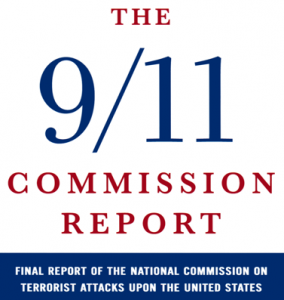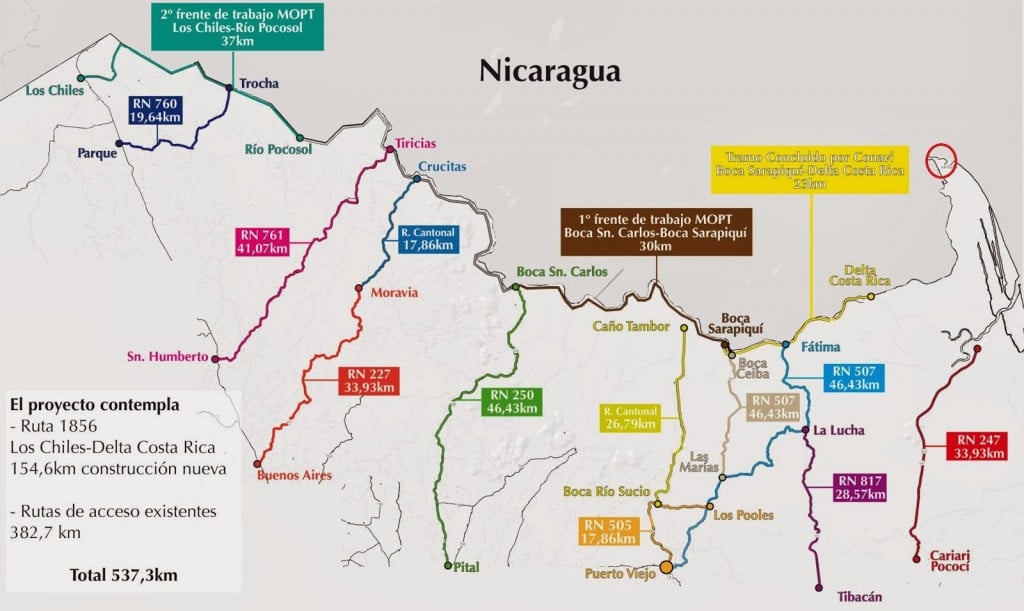The one hundredth anniversary of the Great War is prompting a renewed effort at both the popular and academic levels to ensure that the different units and countries involved are not forgotten. While not supplying combat troops, China entered the First World War on the side of the Allies, furnishing much-needed labourers, 140,000 by conservative estimates and possibly more, who played an essential role on the Western Front and other theatres, taking responsibility for a wide range of tasks. Among others, unloading military supplies and handling ammunitions, building barracks and other military facilities, digging trenches, and even agriculture and forest management.
While their essential contribution was recognized in British documents, both Paris and London saw them as a temporary expedient, to be ended as soon as the war was over. Furthermore, their deployment gave rise to all sorts of culture and language clashes, in addition to the dangers of travelling to Europe and surviving in close proximity to the battle field. However, beyond these travails, the Chinese Labour Corps left a significant legacy, with members seeing the world, experiencing other nations, and often becoming literate. More widely, despite being on the winning side, China’s failure to secure any gains at Versailles prompted the May 4th Movement and can be seen as a key juncture in the long and winding road from empire to nation-state. It is an important reminder of the global nature of the Great War, whose impact extended far from the battle field to all corners of the world.
The one hundredth anniversary of the Great War has prompted renewed interest in the conflict and a major drive by myriad institutions and individuals to inform the public and assure that the sacrifices made one century ago are never forgotten. While the main theatres of the war were in Europe, there are reasons why it is called the First World War, since its nature and scope were truly global. This includes Asia, which may have seen limited combat operations (other than in South-Western Asia, part of the Middle East) but where a number of countries made key contributions to the Allied cause. They include Japan, whose navy helped secure the Pacific, while her troops took over German territories, and took part in the conquest of Tsingtao; China, which contributed much-needed workers; and India, whose soldiers helped stabilize the Western Front in late 1914 and later played a key role in a wide range of theaters, including Gallipoli, East Africa, and Mesopotamia.
While such contributions were recognized by contemporary media and are well documented, with the passage of time there is little public awareness of them. The first centenary of the war is, however, prompting many public and private organizations in countries like Japan,1 India, and China2, and among communities from those nations, to make renewed efforts to make sure that their contribution is duly recognized, both at home and abroad, and in particular among their war-time Allies. This is an aspect of the renewed geopolitical competition in the Asia-Pacific region, which also features countries vying to stress their past roles in world conflicts.
China at the outset of the War: Nation Building, Limited Sovereignty, and Collective Security
The outbreak of the Great War caught China in the midst of a giant yet incomplete transformation from Empire to Republic, an exercise in nation building that would take decades to complete and see myriad wars and turmoil amid fragmentation and widespread human suffering.3 The Revolutionary Party(中华革命党), renamed Guomindang (国民党) in 1919, had been forced in 1916 to cede the presidency to Yuan Shikai, and warlords ruled much of the country, with significant foreign influence. In 1916 Duan Qirui, a graduate of the Beiyang Military Academy who had furthered his studies in Germany, became prime minister following Yuan’s death. One of the dossiers on his table was whether to join the Great War. One of the factors at play was the possibility of recovering the German concessions in Shandong Province, and more generally of improving China’s international standing, something which, among others, leading intellectual Liang Qichao hoped for.4 Pressure also came from the United States, at that time moving towards joining the war, and from the Japanese, who had decided on a policy of loans to China and other financial incentives in exchange for recognition of their position in northern regions which Tokyo considered a sphere of influence necessary to protect its Korean colony and shield it from Russian ambitions, following its failed bid to impose the “twenty one demands” on China in 1915.5 These wide-ranging demands were tantamount to turning China into a Japanese protectorate. Among others, Tokyo demanded freedom of movement and the right to purchase land and carry out business for Japanese nationals in South Manchuria and Eastern Inner Mongolia, a promise “not to cede or lease to any other Power any harbour or bay on or any island along the coast of China”, and the appointment of Japanese advisors.6 In March 1917 Duan convinced Parliament to break diplomatic relations with Germany, and, after a struggle over who had the constitutional power to issue it, a declaration of war by the cabinet followed in August.7
Thus, although her own nation-building process was far from complete, Chinese leaders decided to join a conflict which, while global in nature, had its origin and main focus thousands of miles away. Ideally, being on the winning side would help China consolidate and increase her national stature, but as we shall see later, things would turn out quite differently. What was clear in 1916 was that whereas China had little, if any, expeditionary military capability to offer to the Allies, it had something they desperately needed: manpower. The concept was simple: import Chinese labour, thus freeing British and French young men for combat duties. Although the Chinese and Japanese governments concluded a military agreement whereby Tokyo would provide “aid, advisers and instructors to develop the Chinese War Participation Army to support the Allied cause,” no troops were deployed to Europe, and Japanese aid simply served the purpose of reinforcing Duan’s troops concentrated in North China.8 Germany, on the other hand, provided financial support to Sun Yat-sen’s alternative government in Guangzhou, in the hope of pushing China back into neutrality.9 As was the rule in those years, factional interests frequently took precedence over the exercise of national power.
The Chinese Labour Corps: China’s major contribution to the war effort
Logistics is often forgotten, or at least rarely granted a degree of attention commensurate with its true importance, in many military histories. In the case of the Western Front in the Great War the distances involved were not huge, in particular if compared to some theatres in the Second World War, but the industrial nature of the fighting, the dual demands of artillery and fortification, and the sheer number of troops involved, meant a strong and growing demand for labour behind the trenches. Although some machinery and vehicles were available, building and repairing railways and roads, moving supplies, mail, troops, and the injured, laying down and maintaining telephone lines, plus constructing all sorts of military facilities, were tasks mainly undertaken with a mixture of human and animal labour. Many labour units were created. The Royal Engineers, for example, set up eleven labour battalions, and in January 1917 the British Labour Corps was born. By the time of the armistice, it had grown to almost 400,000. Staffed by officers not medically fit for front-line duties (often returned wounded), it regularly operated within range of enemy fire, and some of its units were employed as emergency infantry during the spring 1918 German offensives.
The Allies quickly realized that their manpower pool was simply not large enough to feed this ever-growing need for construction and logistics labour. At first arrangements were often ad hoc, but the scale of the fighting, the inadequacy of some earlier approaches, and the realization that this would be no short conflict, soon gave way to a more systematic approach. France was the first to tap into China’s huge labour force. Great Britain followed, with both countries already in negotiations with China in the summer of 1916.10 According to the Official History: ‘…although some labour units were raised and eventually labourers from various parts of the Empire and China were brought to France, the numbers were never at any period sufficient for the demands of a great army operating in a friendly country’. Despite this, it is clear that Chinese workers played a crucial role in sustaining the Allied armies in the field. Precise numbers are not available, with some sources mentioning that in August 1918, 96,000 were enrolled in the British Labour Corps, with a further thirty thousand working for France,11 but Chinese sources stress that the specific number is disputable and that 140,000 in total for both France and Britain is a conservative estimate.12 Guoqi Xu notes the “sizable discrepancy among the figures provided by different sources” and provides a range from several authors.13 Among others, he mentions the Dictionary of the First World War by Stephen Pope and Elizabeth-Anne Wheale, eds. (320,000)14, Arthur Philip Jones (150,000 Chinese workers in France, Mesopotamia, and Russia)15, Chen Sanjing (between 175,000 and 200,000 adding those recruited by France and Great Britain)16, and CLC interpreter Gu Xinqqing (175,000 again as a joint figure)17. He also quotes a US War Department telegram (97,000 recruited by London, 40,000 plus 1,500 specialists by Paris)18. We could add that, although Paris was first to tap China’s vast labour pool, there were precedents in Great Britain for the employment of Chinese at times of war to free military and naval personnel from other duties. This includes the Napoleonic Wars, during which ‘Chinese men who worked in merchant ships were then used by the Royal Navy in support roles to provide cover for the British men who were away fighting, such as ships’ porters’.19 London also used colonial workers in the Indian, Egyptian, and South African Native Labour Corps.
The Individual Experience of Chinese Workers: Tasks, Dangers, and Opportunities
Even before China had formally declared war, a processing plan was set up in Shandong Province, with the purpose of screening and hiring labourers. Located near the Royal Navy’s base at Weihaiwei, it was followed by a second facility in the port of Qingdao. Recruitment was not difficult, given the region’s poverty and instability and the high wages offered. These consisted of twenty Chinese dollars as a starting bonus, food and clothing, and ten dollars per month partly payable to their families. The medical examination was focused on tuberculosis, trachoma (a viral disease of the eye, then prevalent in Shandong), and venereal diseases.20 Some 100,000 were selected, issued a serial number in a dog tag around their wrists,21 and sprayed prior to embarkation. Many still donned a queue and were urged to cut it.
Travel to Europe was not without its dangers. Already in 1916 a ship carrying Chinese workers to France22 had been sunk by a German submarine in the Mediterranean, with the loss of 543,23 prompting the use of an alternative trans-Pacific route across Canada by train.24 Once in the Old Continent, although their contracts said they would not be deployed in or near the front, they often found themselves under enemy fire or dealing with other dangers, such as unexploded ammunitions.25 Illness was an additional hazard (including the Spanish Flu from 1918), together with the harsh climate and unfamiliar food, despite which in December 2018 “Colonel Wetherall said that the Chinese suffered very little from ill-health; out of a total strength of some 93,000 Chinese in France, there were only about 1,500 in hospital.” 26 In addition to those lost at sea, more than 2,000 died. Their tombs can be found in France, Flanders, and England, some in special cemeteries.
Members of the Chinese Labour Corps were distributed in 500-strong companies, under British officers and Chinese foremen. The language barrier was a significant problem, for example when an American soldier said “let’s go,” which sounds like “GOU” in Chinese (meaning “dog”) it nearly caused a rebellion among Chinese labourers.27 Many translators were hired, while efforts were conducted to recruit Chinese-speaking British officers. The latter’s number was small, not only because there were not that many Britons resident in China who had mastered the language but because most of those able and willing to serve sought to join a combat unit. British officers never saw their Chinese Labour Corps counterparts as true equals.28
A typical schedule was ten working hours per day, seven days per week.29 Although under military discipline and severe restrictions on their movement, to a certain extent resulting in segregation, authorities made efforts to accommodate some of their customs. An example was the free days they got during Chinese festivals.30 An effort was made to facilitate postal communication with their families, despite censorship and the fact that many were illiterate. The resulting letters (up to fifty thousand per month) are a very useful source to learn about their roles, thoughts, and living conditions. The YMCA played a key role in their welfare, organizing recreational activities and literacy classes. Hong Kong- and US-educated James Yen created a 1,000-character vocabulary and the Chinese Workers’ Weekly, also writing many letters for illiterate labourers.31 As a result of various literacy drives, it is estimated that some two thirds of the members of the Chinese Labour Corps returned being able to read and write, albeit to a limited extent, whereas originally more than eighty percent were illiterate.32 Classes were so popular that they ran out of materials.33
Their work was varied and ranged from unloading military supplies and handling ammunition to building barracks, digging trenches, and constructing fortifications. It even extended to agriculture and forest management.34 The minutes of a meeting on “Chinese Labour in France,” held on January 18, 1918 at 10 Downing Street with the prime minister in the chair (and following a War Cabinet meeting on the same subject the day before), reveal that at first labour tended to be allocated to the different services from a central pool, but this gave way to the view that it was better to second at least a minimum to each department, so that, among others, the members of the Corps could specialize and achieve greater proficiency at a given kind of work, and their supervisors become more familiar with them. That was the position defended by Sir Eric Geddes, who explained that it was the system employed with the first seven thousand Chinese workers brought to France by the British Department of Transportation. General Travers Clarke supported the “desirability of keeping the same men at the same job,” adding that “it was done now at a considerable extent.” He spoke in favour of retaining a central pool, which, while compatible with the described specialization, allowed a measure of flexibility. Eric Geddes said that labour was “nobody’s child” and defended the permanent allocation of “a minimum number of men” to departments, so that “they could put in their interpreters and N.C.O.s and control would increase rather than diminish.” Sir Joseph MacLay and Sir Guy Granet concurred in these views of Eric Geddes.35
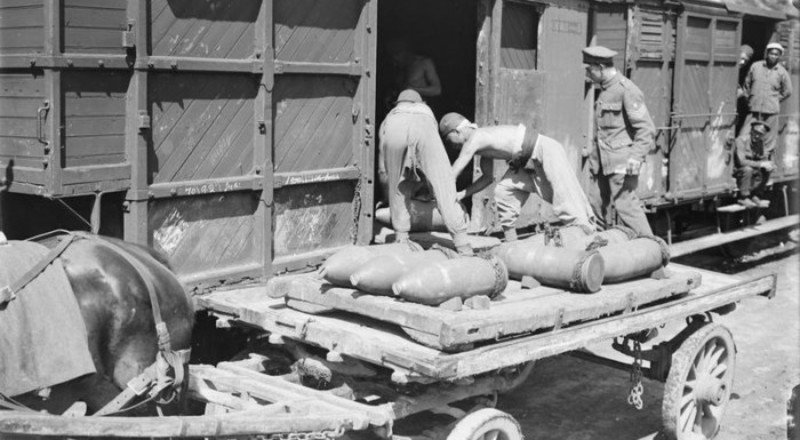 |
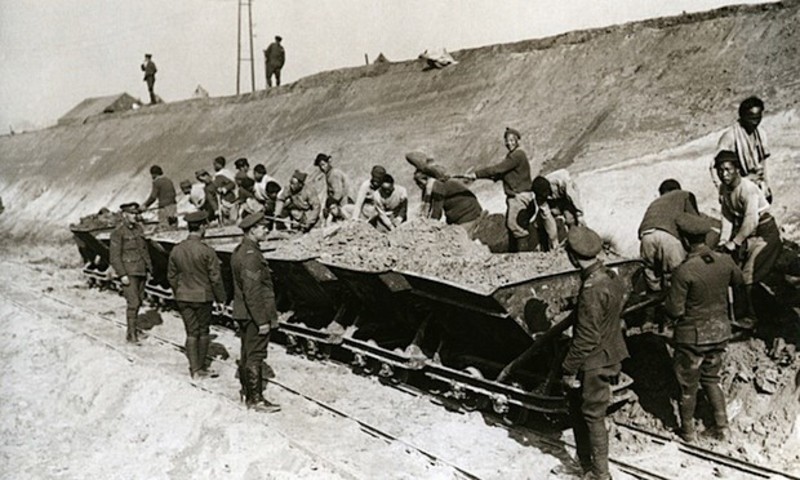 |
|
|
| Handling ammunition by the CLC |
Building roads by CLC, to sustain industrial warfare on Western Front |
While labouring long hours in uncomfortable and often hazardous jobs, their stay in Europe was for many their first opportunity to experience life not only outside China but beyond their village or province. As often happens, contact with a different reality prompted more than a few to question their country’s place in the world and to wonder how it could be changed. Contact with fellow citizens and with nationals from other Allied nations may have helped the members of the Chinese Labour Corps to develop a sense of national identity and of their country’s place in the world.36 It should also be emphasized that, while originally intended to carry out unskilled tasks, members of the Chinese Labour Corps often ended up being responsible for much more complex tasks, even tank maintenance, overcoming the extensive prejudice that saw them as hard working but incapable of performing technologically-demanding jobs.37
The British Government View: A Commodity? Yet a Valuable One
A look at British official documents reveals a dual view of the Chinese Labour Corps. On the one hand, its members often appear as little more than objects. They are referred to in terse terms, as if one was talking about a piece of equipment. On the other, the vital nature of their contribution to the war effort often appears openly, without any attempt to disguise it. This is clear even in the immediate post-war period, once the hostilities were over but the need for labour remained high. For example, the minutes of the December 4, 1918 meeting of the War Cabinet included an item devoted to the “Repatriation of Chinese coolies.” Faced with a proposal from the Ministry of Shipping to repatriate a number of workers, taking advantage of available space in two passenger ships, “the Adjutant-General said that he had taken this matter up with G.H.Q. in France, who were averse from the idea of repatriating Chinese coolies at the present time. There was a great deal of work to be done, e.g., handling cargo at the ports, upkeep of roads, filling up the shell-holes, and rolling up the barbed wire, for which civilian labour would have to be engaged if the Chinese were withdrawn.”38 At the meeting, the British prime minister pointed out that while there was a shortage of labour in France, “the amount of work requiring this class of labour must have greatly diminished since the cessation of hostilities,” and it was decided to arrange the repatriation of five thousand Chinese workers, with a further five thousand to follow.39 Thus, while essential, and openly recognized as such in official documents, the decision was made that Chinese workers, viewed as a temporary asset, were to be returned to their native country as soon as possible.
Direct Hiring and the End of the Comprador System: a Precedent for General Stilwell’s Training Drive?
At the same January 18, 1918 meeting referred to earlier, Colonel MacLaren Brown said that during the construction of the Canadian Pacific Railway, with which he was familiar, “the recruiting and control of the Chinese was kept in the hands of the Compradors. The Railway Company dealt only with and through the Compradors.” While conceding that in that case “the Chinese understood the system and it worked well”, Colonel Brown explained that “in the case of the Chinese in Northern France they have been recruited on a different basis and under special conditions,” a reference to the system of individual contracts outlined earlier.40
We can thus see how the Great War led to a change in the way Chinese labour was employed, dispensing with middlemen. During the Second World War, a similar change would take place to some extent in the military sphere. When training Chinese soldiers at Ramgarh (British India) from 1942, in an attempt to develop a number of modern, capable divisions, US General Joseph Stilwell accepted the recruits sent by the government of the Republic of China but insisted that they be paid individually, in a bid to prevent corruption by officers pocketing their men’s pay.41
Considering, and Rejecting, the Use of Chinese Troops
France did not just initiate the recruitment of Chinese workers. It also endeavoured to secure the deployment in the Western Front of Chinese troops,42 although the move was ultimately rejected by London and never took place. Even before the Chinese declaration of war, General Ferdinand Foch had argued for the need to get China to raise “pioneer battalions,” between 1,200 and 1,500 strong. In an August 11, 1917 secret report, he pointed out that, “given the population of China, the number of battalions which can be raised is theoretically limitless.” Foch asked Paris to press China to dispatch between seventy and eighty battalions. Such units, mostly officered by the Chinese themselves, would have undertaken construction and logistical work near and at the front, making it unnecessary to individually hire further Chinese workers.43 France did not manage to persuade the United Kingdom, with the War Cabinet noting at its February 4, 1918 that “the Supreme War Council do not accept Joint Note No. 11 of the Permanent Military Representatives on the subject of Chinese battalions.”44 Logistics did not seem to be the reason behind British opposition despite the shortage of Allied shipping and the unsuitability of Chinese vessels for oceanic voyages described in the same missive.45
While not the focus of the paper, it should also be mentioned that a small number of Canadian citizens of Chinese origin volunteered and managed to be accepted for service, despite the refusal to enrol them in, for example, British Columbia. While sources estimate them at, at most, three hundred, ‘Those of Chinese origin who are known to have volunteered included Frederick Lee and Wee Hong Louie (enlisted in Kamloops), William Thomas Louie (Calgary), Tung On Hong (Sudbury), and Victor Fong (Quebec).’46
The Ultimate Impact of China’s Contribution to the War Effort: Logistics, Frustration and Revolution
CLC recruits in Weihaiwei doing physical training before leaving for Europe (image)
As explained, life was not easy for the members of the Chinese Labour Corps, and a number made the ultimate sacrifice. On the positive side, however, they could acquire some savings, widen their horizons, and some gained a measure of literacy. Many went back home with the desire and ability to play a more meaningful role in the future of their country. The presence of Chinese in France did not end with the Great War, and included some key figures in Chinese communism who took part in the Work-Study Program, including Deng Xiaoping and Zhou Enlai. Deng lived in France from 1920 to 1925, where he became active in politics for the first time and joined the Chinese Communist Party.47 Zhou was in the country from 1920 to 1924, playing a leading role among Chinese work-study students.48
At the international level, the outcome of the First World War was frustrating for China. Despite being on the winning side and a participant in the Versailles Peace negotiations, China was unable to secure any significant gains. Japan, a more powerful and cohesive state which had entered the war earlier, pre-empted Chinese moves and succeeded Germany in securing rights in China and a number of Pacific Ocean islands. The 62-strong Chinese delegation was attacked following revelations of Japan’s confidential agreements with France, Great Britain and Italy, on the one hand, and Duan Qirui on the other. US President Wilson, originally sympathetic to China, agreed on April 30, 1919 with French PM Georges Clemenceau and British PM David Lloyd George to the transfer of all German rights in Shandong Province to Japan. This “flagrant denial of the new Wilsonian principles of open diplomacy and self-determination,” inflamed Chinese public opinion and prompted many protests.49 Enraged, Chinese students in Paris surrounded the hotel where the Chinese delegation was staying in order to prevent it from signing the Peace Treaty as decided by the government in Beijing, which sent a telegram to that effect.50 Mass demonstrations in Beijing on 4 May would give a name to a movement which sought to renew China and raise her to the position of equal among international powers. One of its immediate consequences was the emergence of a new standard for the written language, based on the modern Beijing dialect, which would replace classical Chinese..51 It would also lead to the creation of the Chinese Communist Party.
China’s intervention in the First World War, while contributing to the Allied victory, failed to secure for Beijing any significant geopolitical gains. Indeed, by boosting Japan and weakening the British Empire, it could even be argued that the war facilitated the later clash between the two Asian giants. In its wake, London put an end to the Anglo-Japanese Alliance, sided with the United States, and started work on a new naval base in Singapore, designed to provide a measure of deterrence. The Great War, however, transformed the lives of many Chinese, both members of the Labour Corps and students and intellectuals at home, and helped reinforce the conviction that the country needed to become stronger and renew itself in order to be treated as an equal in the international sphere.52 It was yet another reminder, following less than a generation after the First Sino-Japanese War, that unlike Japan, China had not yet transformed itself into a modern nation state and gained a measure of recognition as an equal by the leading Western powers of the time.
Geopolitics, Public Diplomacy, and Soft Power: Competing Narratives.
The importance of commemorating the First World War and of highlighting their national contribution to the allied victory has not gone unnoticed in Beijing, New Delhi, or Tokyo. The fact that these three major Asian powers, competitors and often party to border disputes on land or at sea, fought on the same side in the Great War is a two-edged sword. It could have led to coordinated efforts and even have provided, in the case of China and Japan, a counter to other historical episodes, very much alive in popular memory, which act as major obstacles to a lasting peace. However, this does not seem to have been the case. China tends to see the Great War mainly in terms of having capped Japan’s successful move from colonialism target to colonial power, with Tokyo not just replacing Berlin in China and the Pacific, but decisively moving towards a paramount position in much of China.
Efforts at remembrance are also being made in the United Kingdom, where “The National Campaign for a Permanent Memorial to the Chinese Labour Corps of the First World War” was launched in August 201453, while initiatives in China include a documentary series by CCTV, introduced with a reminder that “An estimated 145,000 Chinese workers stood shoulder to shoulder with British and French soldiers during the conflict from 1914 to 1918. More than 20,000 of them were killed.”54 A challenge as we commemorate the centenary of the Great War is to ensure it includes greater awareness of the contributions of the Chinese Labour Corps.
Alex Calvo is a guest professor at Nagoya University (Japan) and the author of ‘The Second World War in Central Asia: Events, Identity, and Memory’, in S. Akyildiz and R. Carlson eds., Social and cultural Change in Central Asia: The Soviet Legacy (London: Routledge, 2013).
Bao Qiaoni is an ECUPL (East China University of Political Science & Law) law undergraduate and exchange student (NUPACE Program) at Nagoya University (Japan) School of Law.
Notes:
Archival Materials
NA National Archives of the United Kingdom, Kew, Richmond, Surrey, UK.
SHAT Service Historique de l’Armée de Terre, Service historique de la défense, Château de Vincennes, Avenue de Paris, 94306 Vincennes cedex
USNA US National Archives, National Archives and Records Administration, 700
Pennsylvania Avenue, NW Washington, DC 20408-0001, USA
Other Primary Sources
Huimin hetong zhaogonghetong惠民合同招工合同, Article 9.
Yingguo zhaogong hetong (Renjihetong) 英国招工合同(仁记合同)[The contract of British Recruitment], Article 12.
Secondary Sources
Calvo, Alex. 2014. “Japan and the Century Since World War I.” Shingetsu News Agency, 20 June
2014, available here.
CCTV. 2009. Chinese Labor Corps during World War I. Website of CCTV, available here.
CCTV, 2009. “Chinese labors corps”华工军团. Available here.
CCTV, 2014. “Chinese laborers in the first World War”一战中的华工. Available here.
Chen Sanjing陈三井.1986, 34—35. “Huagong yu ouzhan”华工与欧战[Chinese laborers and the first World War]. Taipei: Zhongyang yuanjinshisuo台北:中研院近史所. As seen in Xu Guoqi徐国琦. 2007, 56. “Wenming de jiaorong—diyi cishi jiedazhanqijian dezaifahuagong”文明的交融—第一次世界大战期间的在法华工[Cultural fusion–Chinese laborers in France during the first World War]. Wuzhou chuanbo chubanshe五洲传播出版社.
De Francis, John. 1984. The Chinese Language: Fact and Fantasy. Honolulu: University of Hawaii Press.
Deng Xiaojun邓小军. February 15,2009. “Bokaimiwu, tanxun ‘yizhanhuagong’ delishi—fang meiguo kalamazudaxuejiaoshou Xuguoqi”, 拨开迷雾,探寻‘一战华工’的历史—访美国卡拉玛祖大学教授徐国琦, Zhongguodangan [China Archives].
Ermito, Daniele and Liu, Lawrence. 2013. “Military 軍事.” In British Chinese Workforce Heritage, available here.
Gu Xingqin顾杏卿. 1937, 50. “Ouzhan gongzuo huiyilu”欧战工作回忆录 [Memoirs of the working experience in first World War]. Shanghai shangwu yinshuguan上海商务印书馆. As seen in Xu Guoqi徐国琦. 2007, 56. “Wenming de jiaorong—diyici shijie dazhan qijian dezai fahuagong”文明的交融—第一次世界大战期间的在法华工 [Cultural fusion–Chinese laborers in France during the first World War]. Wuzhou chuanbo chubanshe五洲传播出版社.
Huang Yinghu黄英湖. December, 2011. “Yizhan fuou huagong jiqite dianfenxi”. 一战赴欧华工及其特点分析 [Chinese laborers in World War I and their characteristic analysis]. Bagui qiaokan.八桂侨刊[Overseas Chinese Journal of Bagui].No.4.
International academic conference of Chinese labors during World War I, held in Weihai威海. September17–19, 2008. Available here.
Jones, Arthur Philip. 1986. Britain’s Search for Chinese Cooperation in the First World War. Hamden: Garland Publishing Inc.
Li Zhancai 李占才. October 3, 2011. “Ouzhan huagong xueleishi”.欧战华工血泪史[The history of Chinese laborers in World War I]. Wenshitiandi.文史天地 [Journal of Literature and History].
Maillard, Domonique. 2009. “Diyici shijie dazhan qijian zaif aguo dezhong guolaogong” 第一次世界大战期间在法国的中国劳工[Chinese laborers in France during World War I]. Guojiguancha国际观察 [International Review]. No.2.
National Palace Museum. 2011. A Century of Resilient Tradition: Exhibition of the Republic of China’s Diplomatic Archives. Taipei: National Palace Museum.
Peng Zhiguo彭志国. April 1, 2014. “Yizhan huagong, bugai wangji de xuelei zhi ge” 一战华工,不该忘记的血泪之歌 [Chinese laborers in World War I,a song of blood and tears].Youpin优品 [Trading up]. No.4.
Pope, Stephen, Wheale, Elizabeth-Anne, and Robbins, Keith, eds. 1995. Dictionary of the First World War. New York: St.Martin’s Press.
Schwartz, Benjamin I. 1983. “Themes in Intellectual History: May Fourth and After.” In John King Fairbank, ed. The Cambridge History of China: Volume 12, Republican China 1912-1949, Part I. Cambridge: Cambridge University Press
Sheridan, James E. 1983. “The warlord era: politics and militarism under the Peking government , 1916-1928.” In John King Fairbank, ed. The Cambridge History of China: Volume 12, Republican China 1912-1949, Part I. Cambridge: Cambridge University Press.
Song Enrong宋恩荣. 1989, 528. “Yanyangchu quanji”晏阳初全集[Complete works of Y.C. James Yen]. Hunan jiaoyu chubanshe湖南教育出版社 [Hunan education press]. Vol.2. As seen in XuGuoqi徐国琦. 2007, “Wenming de jiaorong—diyici shijie dazhan qijian de zaifa huagong”文明的交融—第一次世界大战期间的在法华工[Cultural fusion–Chinese laborers in France during the first World War]. Wuzhou chuanbo chubanshe五洲传播出版社.
Spence, Jonathan D. 1990. The Search for Modern China. New York: W W Norton and Company.
Stilwell, Joseph Warren. 1948. The Stilwell Papers. New York: William Sloane Associates Inc
“The Labour Corps of 1917-1918.” In The Long, Long Trail: the British Army in the Great War, undated, available here.
The National Campaign for a Permanent Memorial to the Chinese Labour Corps of the First World War, undated, available here.
Vancouver Public Library. 2012. “Chinese-Canadians in World War I (1914-1918).” In Chinese-Canadian Genealogy, available here.
Walker, James W. St. G. “Race and Recruitment in World War I: Enlistment of Visible Minorities in the Canadian Expeditionary Force.” Canadian Historical Review LXX I (1989)
Wang Jiading王家鼎. December 15, 1997. “Diyici shijie dazhan qijian huagong fufa”第一次世界大战期间华工赴法 [Chinese laborers who went to France during the first World War], Mingguochunqiu民国春秋. No.6.
Wang Jian王建. 2014, 33-36.“Diyici shijie dazhan qijian Shandong diquhuagong zhaomu”
第一次世界大战期间山东地区的华工招募 [Recruitment of Chinese laborers in Shandong Area during the First World War]. Anhui daxue shuoshi lunwen [安徽大学硕士论文].
Xu Guoqi徐国琦. 2007, 56–60. “Wenming de jiaorong—diyici shijie dazhan qijian dezai fahuagong”文明的交融—第一次世界大战期间的在法华工[Cultural fusion–Chinese laborers in France during the first World War]. Wuzhou chuanbo chubanshe五洲传播出版社.
Xu, Guoqi. 2011. Strangers on the Western Front: Chinese Workers in the Great War. Cambridge: Harvard University Press.
Xu, Guoqi. 2011. China and the Great War: China’s Pursuit of a New National Identity and Internationalization (Studies in the Social and Cultural History of Modern Warfare). Cambridge: Cambridge University Press.
Yang, Jichen杨机臣. September 8, 2007. “Beiyi wangde 15wan zhongguo yizhanhuagong”被遗忘的中国一战华工[The forgotten Chinese laborers in the first World War]. Zhongguo zuojia中国作家Chinese writers.
Yao Na姚娜. September, 2011.”Yizhan qijian zhongguo zhengfu paiqian huagong fuou dongyinxi” . 一战期间中国政府派遣华工赴欧动因析. [Causes of Chinese government’s sending laborers to Europe during World War I]. Anhui ligong daxue xuebao (shehuikexueban) 安徽理工大学学报(社会科学版)[Journal of Anhui University of Science and Technology(Social Science)], Vol. 13. No. 3.
Yong, C. F. 1987. “The 1911 Revolution and the Kuomintang Movement in Malaya and Singapore, 1912-1925.” In Lee, L. T. ed. The 1911 Revolution: the Chinese in British and Dutch Southeast Asia. Singapore: Heinemann Asia, 1987, 100.
Notes
1 A. Calvo, “Japan and the Century Since World War I”, Shingetsu News Agency, 20 June 2014, available here.
2 International academic conference of Chinese laborers during World War I, 2008. CCTV, 2009; CCTV, 2014. Deng Xiaojun 邓小军. February 15, 2009.
3 Yao Na 姚娜. September, 2011.
4 Sheridan 1983, 308.
5 These demands alarmed Western powers bent on keeping the balance of power in China. They also prompted a rift between the Kuomintang, radically opposed to the Yuan Shikai regime, and those organizations stressing unity in the face of Japanese expansionism. For the latter see Yong 1987, 100. Yao Na姚娜. September, 2011.
6 Text of the demands, 7 May 1915 ultimatum, and Chinese reply, reproduced in Michael Duffy, “Primary Documents – ’21 Demands’ Made by Japan to China, 18 January 1915”, FirstWorldWar.Com, 22 August 2009, available here.
7 Spence 1990, 289-290. Li Zhancai 李占才. October 3, 2011.
8 Sheridan 1983, 304.
9 Anthony B. Chan, Arming the Chinese: The Western Armaments Trade in Warlord China, 1920-28, (Vancouver-Toronto: UBCPress, 2010), p. 18.
10 Huang Yinghu 黄英湖. December, 2011.
11 The Long, Long Trail. Undated.
12 Xu Guoqi 徐国琦. 2007, 56–60.
13 Xu Guoqi 徐国琦. 2007, 56.
14 Pope et al. 1995.
15 Jones 1986, 108-09.
16 Chen Sanjing 陈三井.1986, 34—35.
17 Gu Xingqin 顾杏卿. 1937, 50.
18 RG165M1444 Roll 2, documents 2055-12, USNA.
19 Ermito and Liu 2013.
20 Huang Yinghu 黄英湖. December, 2011.
21 Yangjichen 杨机臣. September 8, 2007. Domonique Maillard.2009.
22 They had been hired by the French and thus did not belong to the Chinese Labour Corps, which was a British organization.
23 Deng Xiaojun 邓小军. February 15,2009.
24 Li Zhancai 李占才. October 3, 2011.
25 Peng Zhiguo 彭志国.April 1, 2014.
26 CAB 23/8, NA.
27 Song Enrong 宋恩荣. 1989, 528.
28 Ermito and Liu 2013. Li Zhancai 李占才. October 3, 2011.
29 Huiminhetongzhaogonghetong 惠民合同招工合同, Article 9. Yingguozhaogonghetong(Renjihetong) 英国招工合同(仁记合同)[The contract of British Recruitment], Article 12.
30 Xu Guoqi 徐国琦. 2007.
31 Spence 1990, 291-292.
32 Wang Jiading 王家鼎. December15, 1997.
33 Xu 2011 A, 191-192.
34 CAB 24/39, NA.
35 CAB 24/39, NA.
36 Xu 2011 A, 3.
37 Xu Guoqi 徐国琦. 2007.
38 CAB 23/8, NA.
39 CAB 23/8, NA.
40 CAB 24/39, NA.
41 “The U.S. Army insisted that the soldiers at Ramgarh be paid individually and by public roll call. The Chinese constantly agitated that the soldiers’ pay be turned over in a lump sum to the commanding officer of the units involved. This was the traditional channel of theft in the Chinese Army, and the U.S. Army refused.” Stilwell 1948, 213.
42 Xu 2011 B, 185.
43 16N2450, GQG, 6498, SHAT.
44 CAB/23/5, NA.
45 CAB/24/31, NA.
46 Vancouver Public Library 2012. Walker 1989.
47 Nora Wang, “Deng Xiaoping: The Years in France”, The China Quarterly, Volume 92, 1982, pp. 698-705.
48 Paul Bailey, “The Chinese Work—Study Movement in France”, The China Quarterly, Volume 115, 1988, pp. 441-461, p. 442.
49 Schwartz 1983, 407.
50 A copy of the telegram from the delegation reporting on the failure to secure German rights in Shandong is available in National Palace Museum 2011, 134-135. On the other hand, China signed the Treaty of Peace between the Allied and Associated Powers and Austria (Treaty of Saint-Germain-en-Layle) and the Treaty of Peace between the Allied and Associated Powers and Hungary (Treaty of Trianon) National Palace Museum 2011, 136-139.
51 De Francis 1984, 243-245.
52 Deng Xiaojun 邓小军. February 15,2009; Wang Jian 王建. 2014, 33-36.
53 The National Campaign, undated.
54 CCTV 2009.


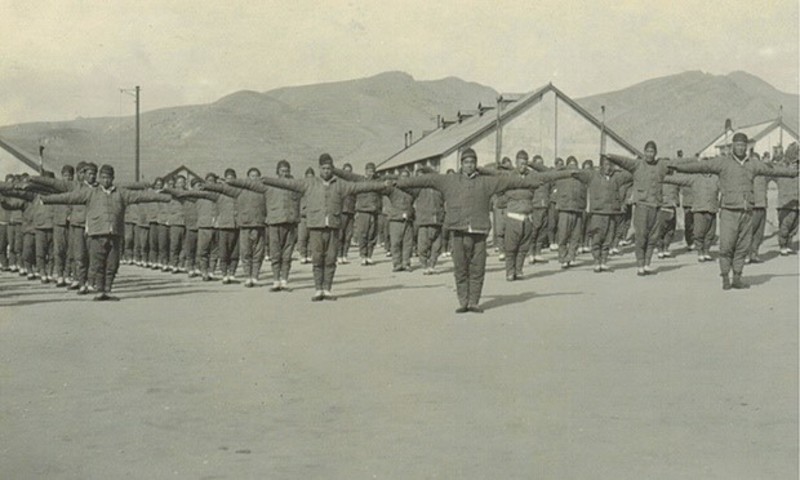
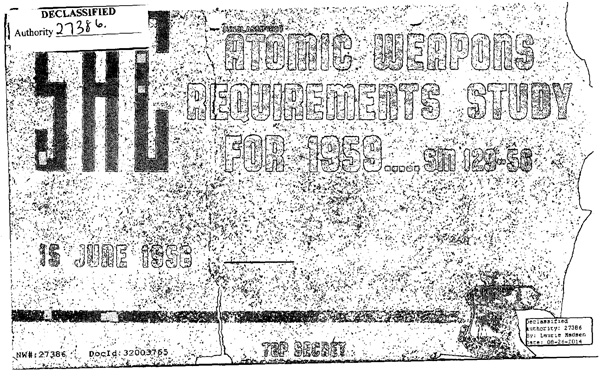









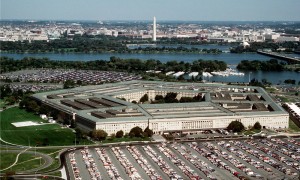

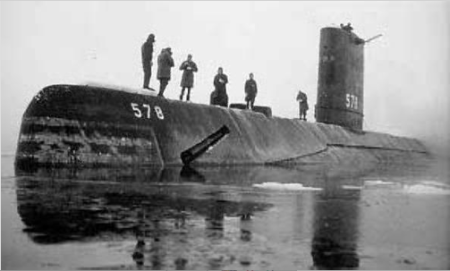
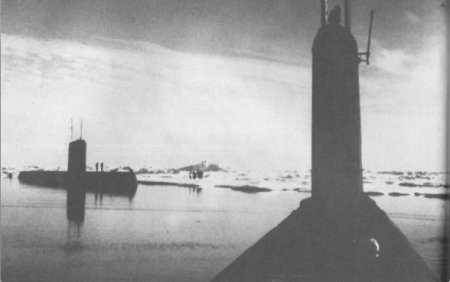


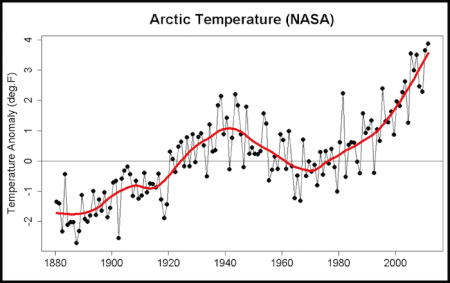








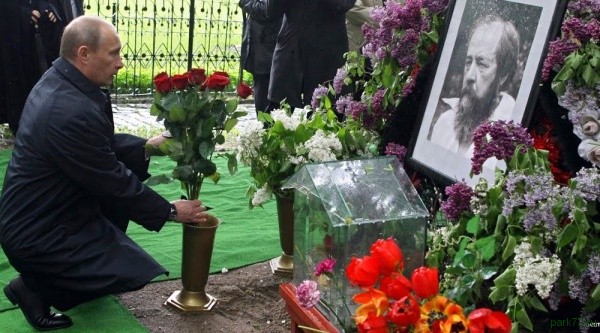
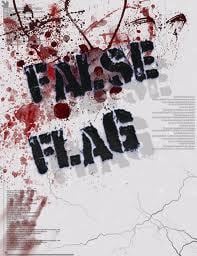
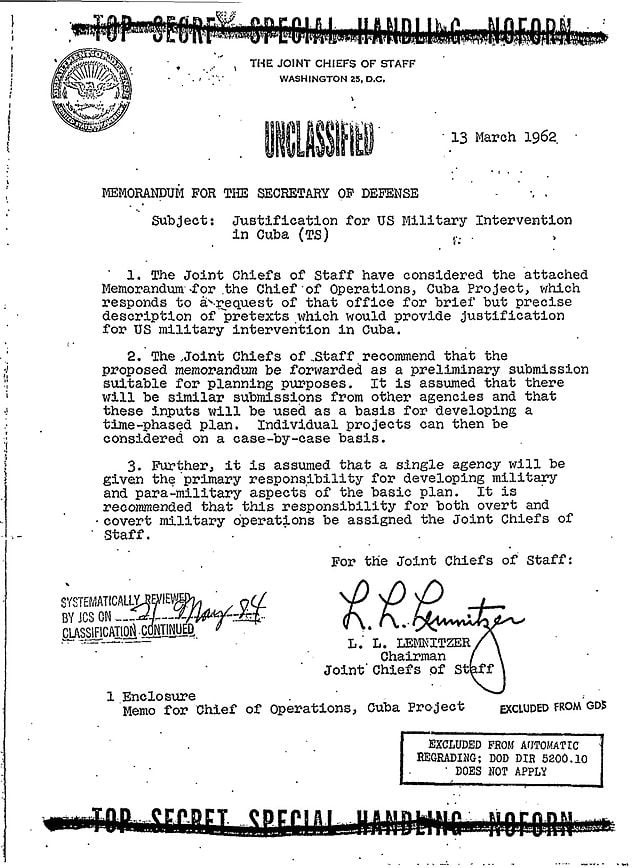
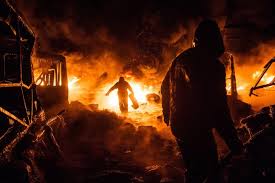





![U.S. Secretary of State John Kerry on Aug. 30, 2013, claims to have proof that the Syrian government was responsible for a chemical weapons attack on Aug. 21, but that evidence failed to materialize or was later discredited. [State Department photo]](https://consortiumnews.com/wp-content/uploads/2013/09/kerry-syria-remarks-300x199.jpg?29c9b7)



